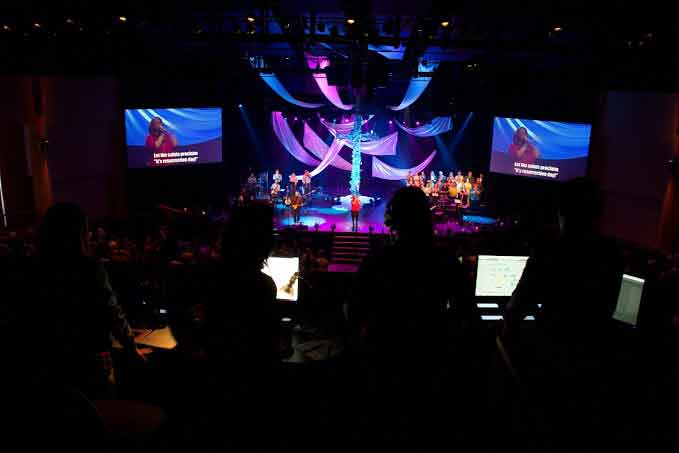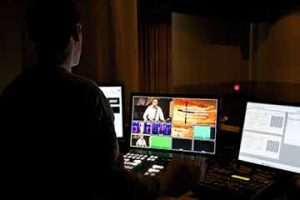
By Eric Rojas
Admittedly, I was quite opposed to the multi-site video model of doing church — initially.
As a long-time pastor from traditional churches, I just couldn’t get my arms around a video preacher. In fact, it took a visit to a video venue campus to change my mind. I heard the “preacher” ask a question and ask for a show of hands. Immediately I thought, No way is anyone going to raise their hands. I was completely wrong, as more than two-thirds of the audience quickly put their arms in the air as an affirmative response to the video preacher’s question.
That experience began a quest to figure out why this model was working so well. What I soon realized was that God was working in a new way — in large part because of the use of audio and video in a new, fresh and excellent way.
RELATED RESOURCES:
- Multisite strategies — ensuring consistency
- Multisite and church planting tools
- 10 things you need to know about multisite churches
4 critical success factors
There are four keys which we’ve found are critical for multi-site technical consistency.
1) Have great people working for you. As an executive pastor, I’m not an audio, video or online expert. While top leaders will always have ideas, it’s vital to have a team of experts in the field running your sound, tech and online ministries. Every penny you spend on staffing in these areas will be well worth it.
When we look at our regional campuses, we always make sure there’s a staffing plan. We’d always love to do more, but we make sure the base is covered with top quality. In previous churches — where I couldn’t afford year-round staffing — I made sure to hire the best consultants possible for key decisions and in key seasons.

2) Invest in top-level resources. Years ago, we moved into a new auditorium. It was a beautiful, 2,000-seat room. There was one problem: The sound wasn’t good enough. We’d cut back on the funding as a cost-cutting measure. It ended up costing us $500,000 shortly after the doors opened to remedy the problem. Now, when the doors open at a new campus, we make sure there are high-quality systems in place. We also make sure the systems from campus to campus are the same or very similar. This allows for uniform training and quality control.
3) Have an extremely well-thought-out and well-communicated technical service plan. We run our services at our regional campuses via fiber optics. When we went to fiber options, we debated and researched long and hard before developing our plan of attack. We ended up with our regionals having a 10-minute delay so there was enough buffer from the broadcast campus. In this DVR-type system, we can now have a five-minute traffic delay at the broadcast campus and we’re OK. We can have a song or song intro go a little long and we’re OK. We can have some technical glitches and we have up to 10 minutes to get them fixed. All these issues have occurred, and they’ve all turned out fine because of the plan we have in place. Additionally, we have our technical and production team on headsets in constant communication so that the regional tech team is aware of any service nuances and how the service is developing.

4) Have a website and social media presence that provides ministry consistency. On our web page, the first thing you’ll see is a choice of campuses. This initial choice helps the end user to find the customized information he or she will want. If you compare campus page to campus page, the only differences are some of the event times and locations. This process is driven by our central communications team — the “sheriffs” of keeping the same feel and functionality.
Each of the campus teams and campus pastors can speak freely into the process and the content, but it’s managed centrally. We also have a central social media team that covers information that’s relevant to all campuses. However, each campus has the freedom to run their own Facebook page or other social media tools if they so desire.
When you have all these keys and systems working together, it’s a thing of beauty that truly helps advance the message of Christ and His kingdom!
Eric Rojas is executive pastor at Christ Community Church in the western suburbs of Chicago. He has been in ministry for 25 years. Follow Eric on Twitter and Facebook.



This is sound advise. I planted a multisite campus last year in the sw suburbs of Minneapolis and had a similar experience. I am currently working for AVE and I have the privilege of helping churches to make wise decisions concerning A/V. Another suggestion I would recommend would be to get your A/V company involved in the process early. It will save you significant time and money down the road.
Thanks for sharing your wisdom Eric!